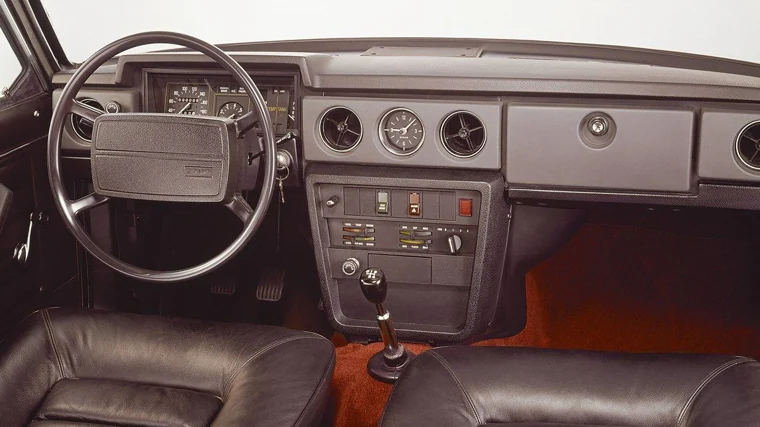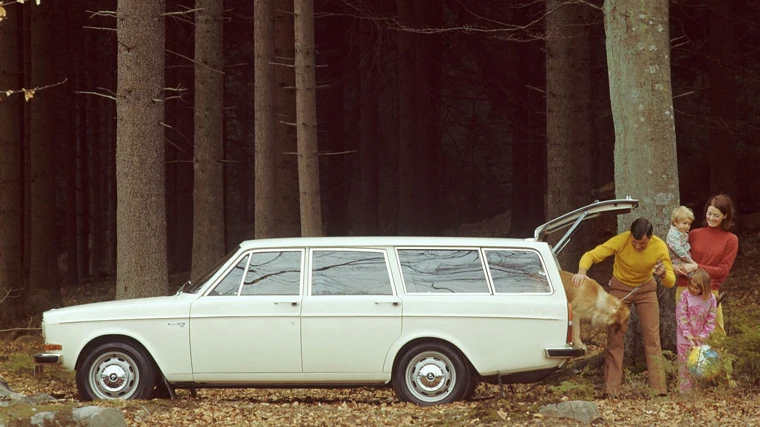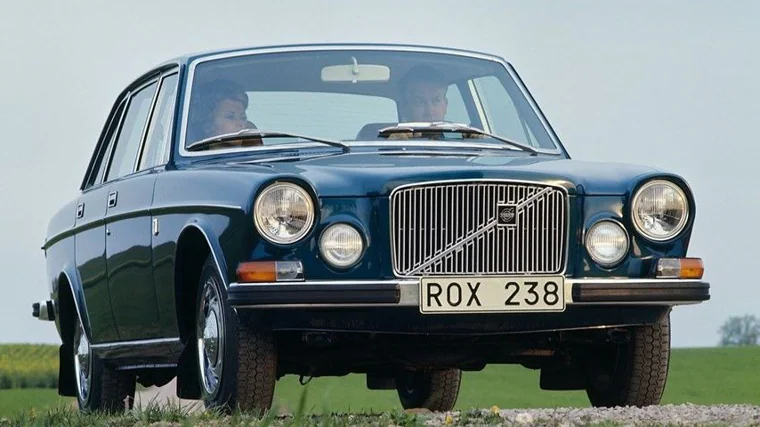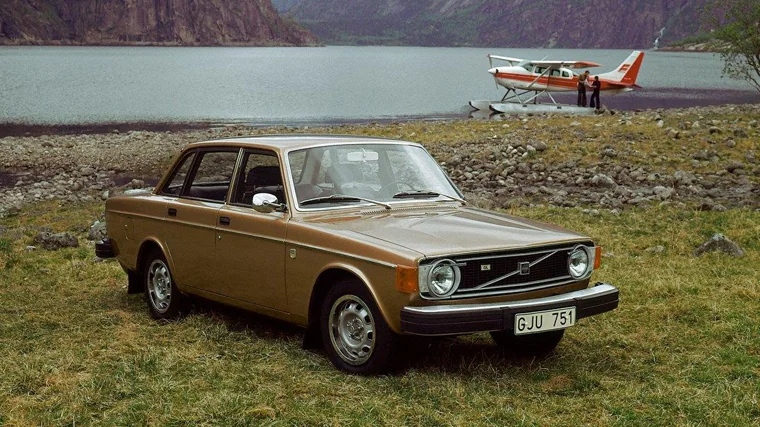The first novelty from the then Swedish firm Volvo after World War II is the PV444: PV for “Personwagn” or saloon in Swedish. In reality, the fight was not yet over since the presentation of the new model took place in September 1944, although it went into production three years later.
It would then evolve to become PV544, practically the same in appearance, which remained in production until no less than 1965. But before that, in 1956, it was accompanied by a new Volvo model, the Amazon. Everything seems already set in the Swedish house, characterized by renewing its models from time to time, but something is changing.
Thus, three and a half years later, the Swedish company’s engineers are leaning before their drawing boards To meet a new order, it is the successor to the PV Series, which had to be larger than the Amazon, but had to weigh the same and be within the same price category.
Within the walls of Gothenburg, the brand’s headquarters, it is known as P660, then 1400 and, finally, 140. The platform is that of the Amazon, maintaining the same wheelbase (2.60 meters) and the suspensions, but the width of the tracks goes from 1.31 to 1.35 meters. The order book includes, in addition to the four-door saloon body, a family one, and, as for engines, they will be four and six cylinders.
The two-door version of the 140 series, the Volvo 142, was introduced in early summer 1967.
The second option
The first sketches are not very aesthetic, with very heavy lines. Thus, Jan Wilsgaard, head of styling, decided to develop in parallel a second prototype with a more angular and spacious body. Against all odds, in December 1961, the company’s management rejected the original drawing and chose that of the second prototype, although it demanded changes, such as cutting the overhangs, to avoid an increase in production costs.
In January 1964, the final shape of the body was fixed, with the exception of the grille. Another discussion is about the position of the gear lever: the trend at that time is for it to be located on the steering wheel, but in the Amazon, where the lever is on the floor, only 6.5% of customers pay for the option that it is on the steering column. An intermediate position is chosen: with the manual transmission, it is on the floor, and on the steering column with the option of a bench in front instead of two seats, with overdrive in the automatic transmission models.

The dashboard, both in its shapes and materials, was designed to reduce damage in the event of an impact…, and we are talking about 1966
The prototype is surprised on the snowy roads of northern Europe with an unknown monogram and the acronym “ZT92”: some think it is a new Japanese brand…
But the enigma was solved in August 1966, when the new Volvo was presented to the press.
Presentation with police chase included
On August 17 of that year, almost four hundred journalists had gathered in the halls of the Lorensberg hotel in Gothenburg to attend the presentation of the Volvo 144. In the midst of the expectation, a panel was raised that hid three pre-series models of the new vehicle. Swedish. For several years all kinds of rumors had circulated about it, but what was finally revealed to the press was a sober and modern vehicle. At the same time as in Gothenburg, the new model was also presented in Oslo, Copenhagen and Helsinki.
The vehicles used in the Gothenburg presentation had been brought into the venue the night before, with the help of a crane, hidden in large wooden boxes. Naturally, the process was supposed to take place with the utmost discretion, but this proved very difficult because it coincided with the deployment of a major operation following the murder of some police officers. In the midst of a national alert situationas soon as the wooden boxes were brought into the rooms, the police received a tip that the fugitives could have been hiding among the audience of a neighboring cinema, which had to be evacuated.
The new code
But let’s go back to the car and its name 144. And the new model debuts in the Swedish company with a very simple identification system: the first number indicates the series, the second the number of cylinders and the third the number of doors. Thus there will be a two-door 142, the four-door 144 and a family 145.

The 145 was a five-door family car with a practically vertical tailgate, two cubic meters of cargo and the floor of the cargo area was completely flat.
As for engines, there are two planned, from the B18 family that equip other models of the brand: the Amazon saloons and estates and the 1800S coupe. The B18A, with a Zenith-Stromberg carburetor, produced 85 HP, and the B18B, equipped with two SUs, 115 HP.
And the architecture of the car was very classic: front engine, propulsion, and a rigid axle and Panhard bar.
An advance in security
But a lot of work had been done on the safety issue, especially on the braking system. In addition to adopting four discs, it incorporated two circuits that acted jointly on the four wheels and were not limited to acting only on the front wheels, the rear wheels, or diagonally. And a special valve was responsible for reducing the pressure in the rear wheels to limit the risk of blocking: an ancestor of ABS, basic and limited to a single axle. At the level of passive safety, to better protect its occupants in the event of an impact, It offered a body with deformable zones, the steering column was articulated in two pieces, in case of a crash. It also had seat belts with a novel hooking system, a dashboard made of soft materials and without any sharp elements, fitted interior door openers and a roof covered in soft material.
To defog the rear window it had a hot air system independent of the heating.

The 164 was the variant with a six-cylinder engine
Volvo’s novelty was very well received to the point that we had to wait eight months to receive the car. And most opted for the 115 HP engine.
Throughout its commercial career, it evolved with new variants: the family car appeared in 1968, with a reinforced rear suspension, as well as a taxi variant. There was an increase in the power of the engines and, in 1969, the six-cylinder baptized as 164 appeared. It shared many components of the 140 series chassis, although it had 10 cm more wheelbase and its front was larger to accommodate the B30 inline six-cylinder engine.
At the same time, the four cylinders change the B18 block for a new one, the B20, with 128 cc more displacement and two variants, one with 82 HP with a single carburetor, and a 100 HP with a special system for the American market, to reduce emissions, which preheated the air/gasoline mixture in the intake manifold. And the dynamo gave way to the alternator.
In 1971 the wheelbase was lengthened by 2 millimeters, as were the tracks and tires, a modification that entailed the widening of the wings. At the same time, the size of the radiator is increased by 25%. In 1974 it adopted large and striking bumpers in the style of those already used in the American market. The front ones are mounted on elastic supports that resisted crashes of up to 5 km/h.

In 1974 it adopted the characteristic large safety bumpers, in the style of the American versions.
When production of the 142, 144 and 145 models came to an end in the summer of 1974 (although the 164 was still on sale in the United States), 1,251,371 units had already left the plant. This series, the first of which Volvo sold more than a million units, contributed significantly to the introduction of the brand into the international market.
The legacy of the 140 series is, however, much greater, and extends until 1993. Its replacement, the Volvo 240, borrowed many of the chassis elements of the 140 series and became the best-selling series production model. from Volvo: about 2.8 million units in its 19 years of existence.
#Volvo #pioneer #field #safety

